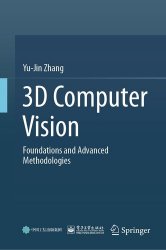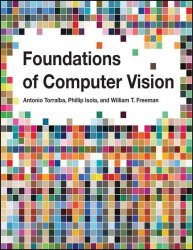- Добавил: literator
- Дата: 30-04-2024, 04:14
- Комментариев: 0
 Название: 3D Computer Vision: Foundations and Advanced Methodologies
Название: 3D Computer Vision: Foundations and Advanced MethodologiesАвтор: Yu-Jin Zhang
Издательство: Springer/Publishing House of Electronics Industry
Год: 2024
Страниц: 479
Язык: английский
Формат: pdf
Размер: 10.9 MB
This book offers a comprehensive and unbiased introduction to 3D Computer Vision, ranging from its foundations and essential principles to advanced methodologies and technologies. Divided into 11 chapters, it covers the main workflow of 3D computer vision as follows: camera imaging and calibration models; various modes and means of 3D image acquisition; binocular, trinocular and multi-ocular stereo vision matching techniques; monocular single-image and multi-image scene restoration methods; point cloud data processing and modeling; simultaneous location and mapping; generalized image and scene matching; and understanding spatial-temporal behavior. Computer Vision is the use of computers to realize human visual functions, that is, the sensation, perception, processing, and interpretation of three-dimensional scenes in the objective world. The original purpose of vision research is to grasp and understand the image of the scene; identify and locate the objects in it; determine their own structure, spatial arrangement, and distribution; and explain the relationship between objects. The research goal of computer vision is to make meaningful judgments about actual objects and scenes in the objective world based on perceived images. Deep Learning uses cascaded multilayer nonlinear processing units for feature extraction and transformation, realizing multilevel feature representation and concept abstraction learning. Deep Learning still belongs to the category of Machine Learning, but compared with traditional machine learning methods, Deep Learning methods avoid the requirements for manual design features under traditional Machine Learning methods and show obvious effect advantages under Big Data.









